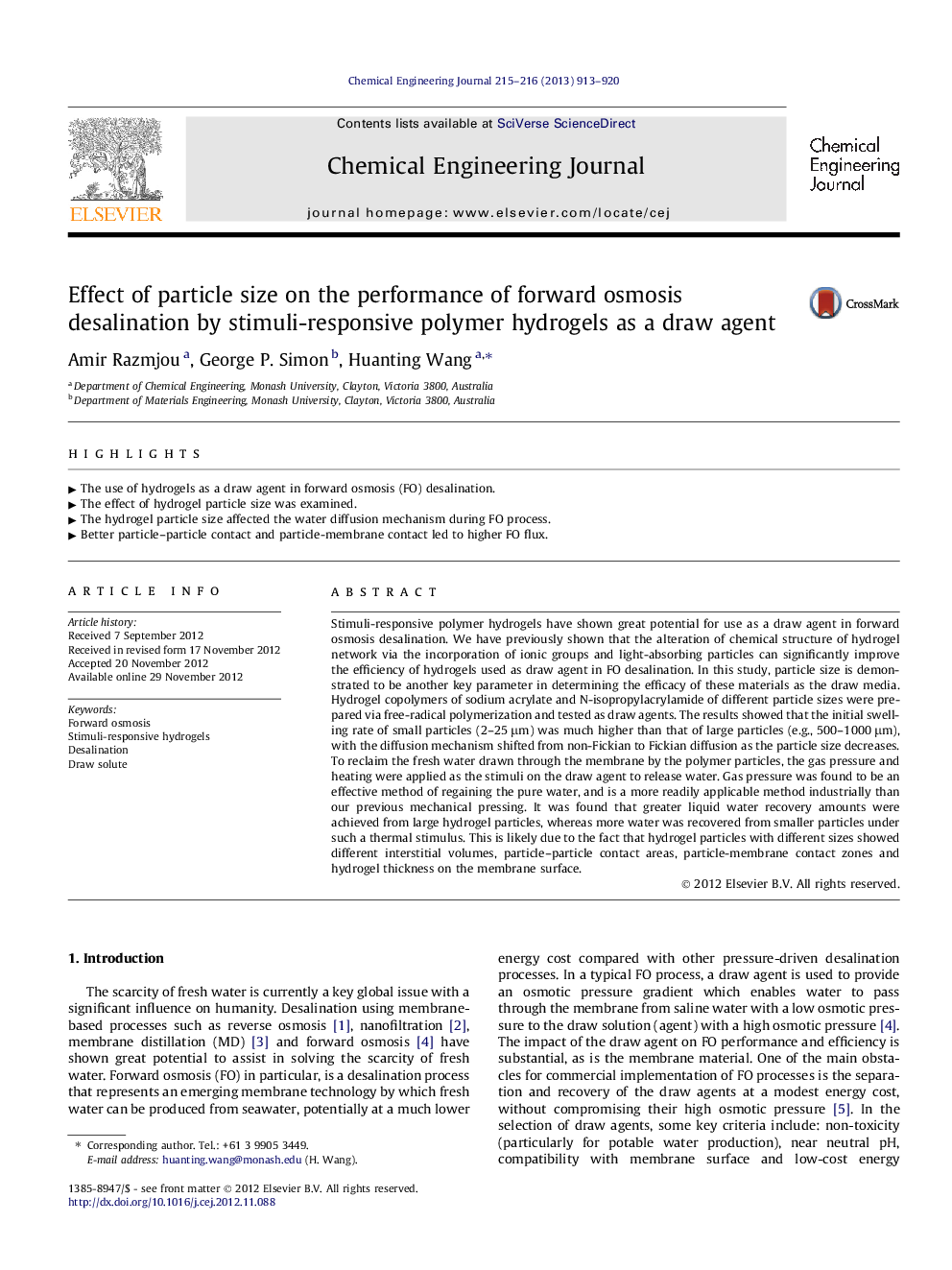| Article ID | Journal | Published Year | Pages | File Type |
|---|---|---|---|---|
| 148991 | Chemical Engineering Journal | 2013 | 8 Pages |
Stimuli-responsive polymer hydrogels have shown great potential for use as a draw agent in forward osmosis desalination. We have previously shown that the alteration of chemical structure of hydrogel network via the incorporation of ionic groups and light-absorbing particles can significantly improve the efficiency of hydrogels used as draw agent in FO desalination. In this study, particle size is demonstrated to be another key parameter in determining the efficacy of these materials as the draw media. Hydrogel copolymers of sodium acrylate and N-isopropylacrylamide of different particle sizes were prepared via free-radical polymerization and tested as draw agents. The results showed that the initial swelling rate of small particles (2–25 μm) was much higher than that of large particles (e.g., 500–1000 μm), with the diffusion mechanism shifted from non-Fickian to Fickian diffusion as the particle size decreases. To reclaim the fresh water drawn through the membrane by the polymer particles, the gas pressure and heating were applied as the stimuli on the draw agent to release water. Gas pressure was found to be an effective method of regaining the pure water, and is a more readily applicable method industrially than our previous mechanical pressing. It was found that greater liquid water recovery amounts were achieved from large hydrogel particles, whereas more water was recovered from smaller particles under such a thermal stimulus. This is likely due to the fact that hydrogel particles with different sizes showed different interstitial volumes, particle–particle contact areas, particle-membrane contact zones and hydrogel thickness on the membrane surface.
• The use of hydrogels as a draw agent in forward osmosis (FO) desalination. • The effect of hydrogel particle size was examined. • The hydrogel particle size affected the water diffusion mechanism during FO process. • Better particle–particle contact and particle-membrane contact led to higher FO flux.
